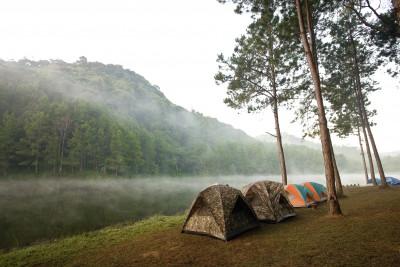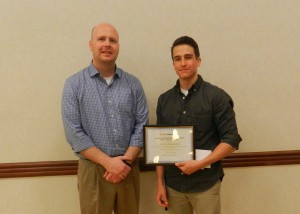
Coordinated by WVWRI, an interdisciplinary team of researchers from the WVU Davis College of Agriculture, Natural Resources and Design and the Eberly College of Arts and Sciences will introduce scouts and their adult leaders to the environmental STEM field, particularly the aquatic sciences, while using the site as an ecology observatory and laboratory.
MORGANTOWN, W.Va. – West Virginia Water Research Institute Director Paul Ziemkiewicz announced today a project to establish an environmental science, technology, engineering, and math education and research program with the Boy Scouts of America’s Bechtel Summit Reserve near Oak Hill, West Virginia.
An interdisciplinary team of researchers from the WVU Davis College of Agriculture, Natural Resources and Design and the Eberly College of Arts and Sciences will introduce scouts and their adult leaders to the environmental STEM field, particularly the aquatic sciences, while using the site as an ecology observatory and laboratory.
The team will include Todd Petty, professor of wildlife and fisheries resources, Jim Anderson, professor of wildlife and fisheries resources, Nicolas Zegre, associate professor of forest hydrology, and Richard Thomas, professor of biology.
Through the program, scouts will earn merit badges while learning about ecology, biology, water science, wildlife and wetlands. Scouts will receive hands-on training through taking measurements, entering data and plotting simple graphs to see the results.
Fred King, vice president for research at WVU, is a strong supporter of the program. “This is a great opportunity to introduce a new generation of leaders to the environmental sciences, West Virginia and West Virginia University. They will find that we have a beautiful state and an outstanding natural laboratory to pursue meaningful studies while receiving hands on guidance from our leading environmental faculty.”
The reserve is the BSA’s newest high-adventure camp and is adjacent to the New River Gorge National River and more than 13 miles of the property border the park, providing access to more than 70,000 acres of managed, Appalachian highlands wilderness beyond the summit property. Up to 50,000 scouts are expected to be on site for major events such as the National Scout Jamboree, which typically takes place in July, with about 20,000 cycling through the site every two weeks during the remainder of the summer.
Federal funding of this project is provided through the U.S. Geological Survey’s section 104b program. The USGS awards 104b grants to State Water Research Institutes that have been established in each of the 50 states, three U.S. territories and the District of Columbia under the provisions of the Water Resources Research Act of 1984. The West Virginia Water Research Institute, a program of the National Research Center for Coal and Energy at West Virginia University, serves as a statewide vehicle for performing research related to water issues. WVWRI is the premiere water research center in West Virginia and, within selected fields, an international leader.
-WVWRI-
as03/21/16



